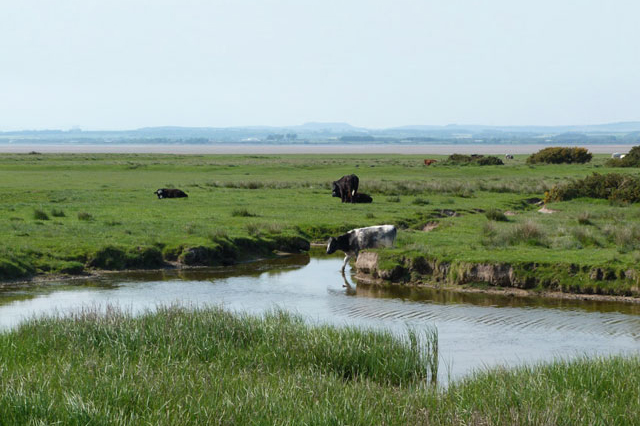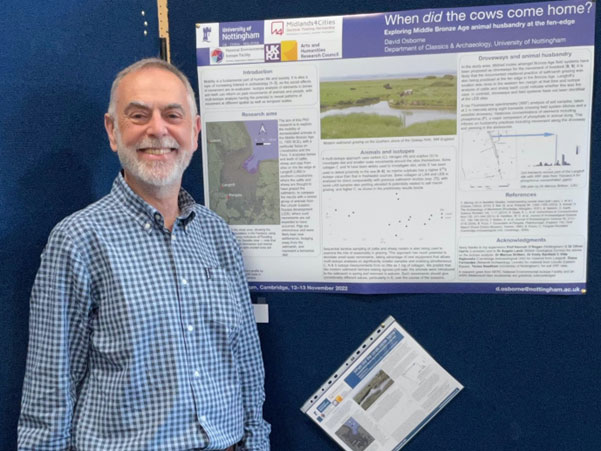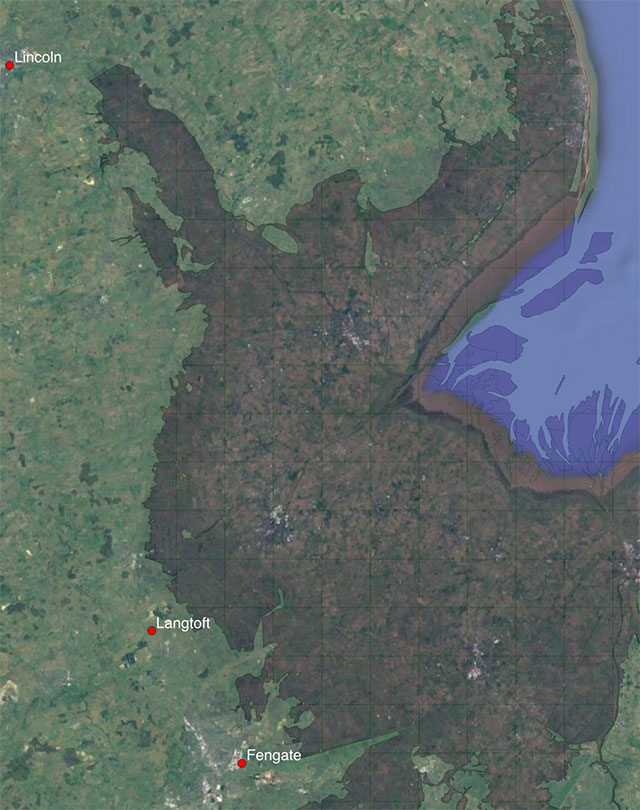When did the cows come home?
PhD student David Osborne is exploring Bronze Age animal husbandry using isotopes and X-rays.
23/02/2023 By BGS Press
Domesticated animals were an important part of prehistoric communities following their introduction to Britain after about 4000 BCE. Analysis of their remains can cast light on their movement and offer a proxy for the day-to-day mobility of their human companions.
Why study mobility?
Studying mobility at smaller scales helps to illustrate our understanding of life in past societies and the landscapes in which they lived. This is the essence of my PhD research, which uses isotope analysis of bones and teeth of cattle, sheep and pigs to explore their diet, from which it is possible to understand more about their husbandry regime and use of landscape resources for grazing.
Field locations
The Lincolnshire fenlands are rich in archaeological sites and my project is looking at two contrasting locations excavated by local units. Network Archaeology in Lincoln uncovered material at sites along the route of the Lincoln Eastern Bypass road, while the Cambridge Archaeological Unit (CAU) holds samples excavated from sites now lost to gravel quarrying to the east of Langtoft, near Peterborough. These represent two different types of grazing: the site near Lincoln is more of a freshwater environment, whilst the one near Langtoft was close to the fen edge and the area subject to marine incursions in prehistory.
The faunal (animal) material from both sites is broadly contemporary, dating to the Middle Bronze Age (around 1500 BCE), and lets us investigate whether animals at the Langtoft site may have been grazed on the fen-edge saltmarshes in summer, whilst the Lincoln animals were further inland.
Isotope analysis at NEIF
NERC’s National Environmental Isotope Facility (NEIF) at BGS Keyworth has funded my isotope analysis of animal bones and teeth from Lincoln and Langtoft through a collaborative project entitled ‘When did the cows come home?’. Prof Hannah O’Regan from the University of Nottingham is the principal investigator and BGS’s Dr Angela Lamb and Prof Jane Evans are co-investigators. The analysis will include simultaneously determining stable isotopes of carbon, nitrogen and sulphur in each sample using the laboratory’s Thermo Fisher IsoLink elemental analyser.

Bronze Age Forum, Cambridge 2022. Poster on my research project. Credit: David Osborne
Soil samples
The isotope analyses of faunal bones and teeth are complemented by the analysis of soil samples collected by CAU at 2 m intervals along eight transects. The transects cross the ditch features of enclosures and a proposed droveway, along which animals may have been moved. Laboratory-based X-ray fluorescence (XRF) spectrometry from the School of Geography at the University of Nottingham is providing data on concentrations of elements, from sodium to radium.
Once complete, the data should allow the creation of an interpolated map showing ‘hot spots’ of elements associated with the presence of animals, such as phosphorus from the phosphates present in their dung. Hopefully, this should reveal concentrations in areas associated with their penning as well as movement along the droveway to and from the fen edge.
Results so far and continuing work
A selection of bones from both sites has been analysed. The bones have shown unexpectedly high concentrations of sulphur, which are a feature of some marine estuarine environments. To explore this further, we are processing some samples obtained from the banks of the Thames at Bankside, dating from the 17th to 19th centuries, and at Wapping, thought to date from the Tudor period. This will allow us to assess if the sulphur isotope signal is contaminated.
The next stage is to sample the dentine from the cattle and sheep teeth. Hopefully multiple, incremental samples in teeth from Langtoft will show oscillating levels of sulphur isotope values, with higher values obtained from summer grazing on the fen-edge saltmarshes and lower values from wintering on drier land. The teeth from the freshwater environment near Lincoln should not exhibit these changes.

Study area: Google Satellite view overlaid with the marine layer from the BGS Geological Indicators of Flooding map, showing the area of maximum marine inundation. Credit: Map data: Google, TerraMetrics, BGS © UKRI
Bronze Age Forum meeting
The project was presented at the Bronze Age Forum in Cambridge in November 2022, where it was awarded the Prehistoric Society prize for best poster contribution.
Acknowledgements
Thanks go to:
- Diana Fernandes and colleagues at Network Archaeology in Lincoln
- Dr Marcus Brittain, Dr Emily Banfield and Vida Rajkovača at CAU
- Lara Maiklem for the Thames bone samples
Funding
Funding was received from the Arts and Humanities Research Council’s Midlands4Cities Doctoral Training Partnership (M4C) and NERC’s National Environmental Isotope Facility (NEIF) at BGS Keyworth.
About the author
David Osborne is a PhD student at the Department of Classics and Archaeology, University of Nottingham.



